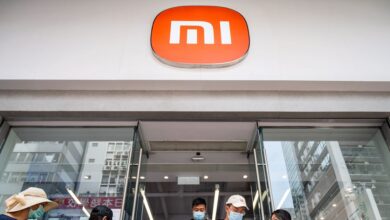TCL 20 Pro 5G review: good looks aren’t everything

The TCL 20 Pro 5G is a good-looking budget phone that works out some of the first-gen kinks we encountered in the 10 Pro, but it isn’t quite ready to take on the category heavyweights.
Much like its predecessor, the 20 Pro 5G combines a high-end look with a budget price tag — $499 for 6GB of RAM and 256GB of storage in this case. That’s $50 higher than the 10 Pro’s starting price, but this time you get more storage and 5G, too.
It’s worth stating again: this is a very good-looking phone for just $500. Its huge curved-edge display boasts very slim bezels, and build quality is top-notch with an aluminum frame and glass on the front and back. The rear-facing cameras are neatly arranged under a vertical strip that sits flush with the rear panel. It’s tidy, and kind of retro cool.
Good looks aside, I wouldn’t recommend the 20 Pro 5G to most people. There are a few usability quirks that make it feel like the second-gen device that it is. But more importantly, the 20 Pro 5G’s network compatibility and security support policy just aren’t as strong as the Pixels and Galaxy A-series phones in the category. It’s slated for two OS upgrades (decent for a midrange phone) but only two years of security patches (less good).
It also lacks compatibility with AT&T’s 5G network and isn’t certified to use C-band frequencies that will likely make Verizon and AT&T’s 5G networks much better over the next couple of years. It’s yet another device that may be best suited for T-Mobile customers who will get full 4G and 5G connectivity and don’t need to worry about C-band as much.
There’s a lot to like about the 20 Pro 5G, and TCL has made some steps in the right direction with this device, but it still comes up short.
:no_upscale()/cdn.vox-cdn.com/uploads/chorus_asset/file/22693979/ajohnson_210630_4655_0001.jpg)
TCL 20 Pro 5G screen, performance, and battery
A lot of the credit for the 20 Pro 5G’s premium look goes to its curved 6.67-inch 1080p OLED screen with slim bezels — you just won’t find another screen like it in this class. It offers a standard 60Hz refresh rate, bucking the trend toward faster 90Hz and 120Hz displays, so you won’t get that smooth-scrolling goodness here. I noticed a little bugginess in the screen’s color temperature jumping between warm and cool, particularly after leaving the camera app, but overall it’s a pleasure to look at. And thankfully, it seems much less prone to registering touches accidentally on the curved sides than in the previous generation.
TCL has included its second-generation Nxtvision 2 technology here, which aims to make standard images and video look more like high dynamic range content, with deeper blacks and brighter whites. You can choose from a few different profiles, with “vivid” as the default, or turn it off entirely.
We thought the first generation of this tech was a little heavy-handed, and I can’t say I’m impressed this time around either. The effect is often so subtle that I’m sure I wouldn’t notice it if I didn’t know it was there. When I could see a noticeable difference with it turned on versus off, it made images look too unnaturally processed for my taste. That said, I don’t think it will negatively impact anyone’s experience using this phone, it’s just not the impressive feature that TCL makes it out to be.
The company seems to be doubling down on this SDR-to-HDR conversion tech rather than joining the rest of the industry in embracing faster refresh rates, and it’s starting to feel like a weird choice. A faster refresh rate screen is an obvious benefit that many more users will see and appreciate. The advantages of viewing HDR content on an HDR screen are real, but the effect is hard to mimic.
TCL has equipped the 20 Pro 5G with a Snapdragon 750G 5G processor and 6GB of RAM. It’s certainly up to day-to-day tasks, and stutters only occasionally with heavier tasks. The customizable smart key from last year’s model makes an appearance again here, and there are a ton of functions you can map it to, from opening a particular app to launching the camera in a specific mode, like night or portrait.
It’s really useful, but unfortunately, it’s still easy to bump unintentionally. It’s positioned out of the way so that I don’t hit it while I’m using the phone; it’s just when I pick up the device or my hand brushes against it that I press it by accident. This is how you end up with multiple photos of your couch cushions in your camera roll, which nobody needs.
Moving along to the top edge of the device, there’s a 3.5mm headphone jack, which is great! The phone’s mono speaker isn’t very good, but I wouldn’t expect it to be at this price, and anyway: headphone jack! The optical in-display fingerprint sensor is also good — one of the faster and more accurate I’ve encountered in the midrange class. I cannot stress enough how much I appreciate this after struggling with some finicky fingerprint sensors in lower-end devices.
The TCL 20 Pro 5G is equipped with a 4,500mAh battery. It will get you through a day of moderate use, but overall battery life doesn’t seem quite as robust as it could be. If you’re a heavy user, you may be pushing your luck by the end of a long day of use. There’s another premium feature on board here, too: wireless charging at up to 15W. That’s something that’s still hard to come by in the $500-and-under class, and it’s only a little slower than the phone’s 18W wired charging.
On the software side, the 20 Pro 5G ships with Android 11 and TCL has promised it two OS upgrades. One (or god forbid, none) is common in this class, so that’s great to see. However, it will get just two years of security updates, which lags behind Samsung and Google’s four- and three-year policies, respectively. You should get more than a couple of years of support out of a $500 phone.
Otherwise, TCL’s take on Android is a good one. It’s highly customizable but doesn’t feel overly busy, with handy features like a tray for frequently used apps tucked away on the right-hand side of the screen, and the option to rearrange the order of system navigation buttons during setup. It’s a lot, but it feels like useful stuff rather than customization overkill.
:no_upscale()/cdn.vox-cdn.com/uploads/chorus_asset/file/22693982/ajohnson_210630_4655_0004.jpg)
TCL 20 Pro 5G camera
The 20 Pro 5G includes a 48-megapixel f/1.8 main camera with optical image stabilization, which isn’t guaranteed at this price and is a real benefit in dim lighting conditions. There’s also a 16-megapixel ultrawide, 2-megapixel macro, and 2-megapixel depth sensor as well as a 32-megapixel selfie camera around front.
The camera hardware is clearly capable of good things. I was pleasantly surprised by the level of detail in photos I took outside in good light — there’s some aggressive sharpening going on, but it’s not too distracting. However, there’s still room for improvement. Colors like greens and blues look a little unnatural and bright. Photos can look flat and washed out, and I spotted more lens flare in my images than I’d expect to see. It’s possible that this is an effect from the cameras’ recessed position rather than on a protruding bump, which would be a real shame — I’ll gladly take an uglier camera bump than flare in my photos.
Portrait mode does a convincing enough job of separating subjects from a blurred background, though a disappointing number of my photos showed a little subject blur even with OIS assisting. “Super Night” mode is a bit of a miss. It seems to retain more detail in very low-light images compared to standard auto mode, but it also employs some heavy noise-reduction. Images show some unnatural smoothing and can skew a little too warm — personally I’d stick to auto mode for low-light shots.
All in all, the 20 Pro 5G’s camera capabilities are underwhelming. There are some real positives — OIS helps you get more steady shots and detail retention is good — but as a total package it’s not quite on par with the likes of the Pixel 4A 5G and Galaxy A52 5G.
:no_upscale()/cdn.vox-cdn.com/uploads/chorus_asset/file/22693981/ajohnson_210630_4655_0003.jpg)
There’s a whole lot to like about the TCL 20 Pro 5G, but it still feels like a device that’s still shaking off some early-generation quirks. While it does offer some features and hardware you’d be hard-pressed to find on any other $500 phone, it’s not quite the total package that it should be for that price.
There have been some important improvements over the first generation. The curved sides of the screen are less prone to accidental touches, and there have been some nice additions like the inclusion of wireless charging. Yet some issues remain where TCL is still finding its footing with this second-generation device: the Smart Key is still easy to press accidentally, the camera is basic, and Nxtvision is underwhelming.
And then there’s network compatibility — in the US, it’s kind of a jigsaw puzzle to which only the established players have all of the pieces. Thanks to some of these missing pieces, Verizon and AT&T customers won’t get the most out of this device and its 5G capabilities. And with only two years of security updates promised, it lags behind the competition in terms of longevity.
If you’re on T-Mobile and you’d really like a budget device with a flagship look and feel, then the 20 Pro 5G is a good option, with a strong caveat that you’ll be putting up with some issues that competitors have already figured out. Most others would do best to consider one of those $500 midrange heavyweights. The Samsung Galaxy A52 5G offers a fast refresh rate screen, better network compatibility, and a solid four-year security support policy. The Google Pixel 4A 5G is a good option, too, with a better camera — if you can find it still in stock. You won’t get a fancy curved display or the high-end build quality with either of those alternatives, but depending on your priorities, they may serve you better in the long run.
Photography by Allison Johnson / The Verge
Source link




